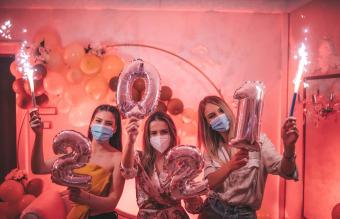
Title: Cleaning_Products.jpg Source: istockphoto.com Permission: Licensed
There are many symptoms of black mold poisoning, and they can easily be mistaken for other medical conditions. By taking the time to educate yourself about black mold, you will be better prepared to deal with it if you or a family member is exposed.
What is Toxic Black Mold?
Black mold grows in damp areas of homes and other buildings. It appears as black splotches on floors, walls, or ceilings. A small patch of mold in or near a bathtub or a shower is not usually something a homeowner should be concerned about; a large patch of black mold is a more serious problem.
Black mold can cause health problems in humans because it releases toxic spores into the air. When these spores are inhaled, they can cause health problems in humans.
The Symptoms of Black Mold Poisoning
The symptoms of black mold poisoning are numerous, and include the following:
- Headaches
- Fatigue
- Muscle aches and cramps
- Sore throat
- Burning of the Eyes
- Sensitivity to Light or Red Eyes
- Diarrhea
- Abdominal Pain
- A Metallic Taste in the Mouth
- Night Sweats
- Difficulty Concentrating
- Dizziness
- Chest Pains
- Heavy Menstrual Periods
Black mold poisoning is also responsible for several symptoms that are less common. If you experience any of the following, you may have been exposed to black mold.
- Depression
- Panic Attacks
- Nose Bleeds
- Difficulty Paying Attention
- Nausea and Vomiting
- Cold-Like Symptoms
- Seizures
In some extreme cases, exposure to black mold can be fatal.
Removing Black Mold from Your Home
If the black mold is confined to a small area of your home, you can remove it yourself. A number of cleaners designed to kill mold are on the market. Be sure to read the instructions before you start; you should also wear rubber gloves and a protective mask while removing the black mold from your home.
To remove black mold from concrete, a bleach and water solution is an effective cleaner. (Use one part bleach to four parts water, and be sure to keep the area well ventilated by opening a window and/or leaving a door open until the concrete has dried.
Black mold can also penetrate walls after a home or building has sustained water damage. Be on the lookout for these signs that you have a mold problem in your walls:
- Bulging
- Cracked or Peeling Paint
- Discoloration of the Wall
If mold is in the drywall, that section needs to be removed and replaced. Black mold can also grow under carpets and in insulation materials. In this instance, you may want to consult a contractor to inspect your property and deal with the problem.
How to Find a Mold Removal Contractor
To find a mold removal contractor in your area, you can check the Yellow Pages. Another option is to type "mold removal contractor" (in quotes) + the name of your town or city in the search box on Google or another search engine. You should be able to get a listing of local contractors who can provide assistance to you. The following websites may be helpful as well:
Certified Mold Inspectors provides lists of mold inspectors and mold remediators (contractors) in the United States, Canada, and Asia.
The HandyAmerican website allows homeowners in the United States and Canada to post the details of their project (including mold removal). Qualified contractors will provide quotes for the work. Homeowners can see a full profile on each contractor, including references, level of experience, and insurance information.
If you are experiencing any of the symptoms of black mold poisoning listed above, please see a doctor. Be sure to mention whether you have recently moved or have experienced water damage to your home or office. It's an important piece of information and will help the doctor to give you the correct diagnosis for your condition.







